I. Revolutionary method to predict Alzheimer's disease 20 ~ 30 years prior to the onset of clinical symptoms.
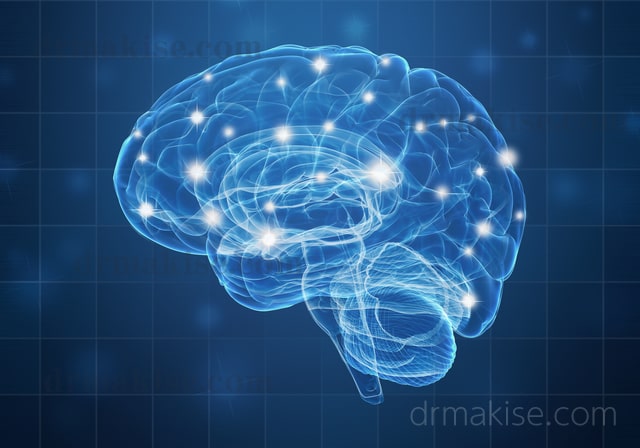
Until recently two methods were used for diagnosis of Alzheimer’s disease (AD): PET (Positron Emission Tomography) or CSF (Cerebrospinal Fluid). The both methods are aimed to find amyloid β (Aβ). However, amyloid PET costs about $ 4,000 and CSF testing is invasive. Both are burdensome for the patients.
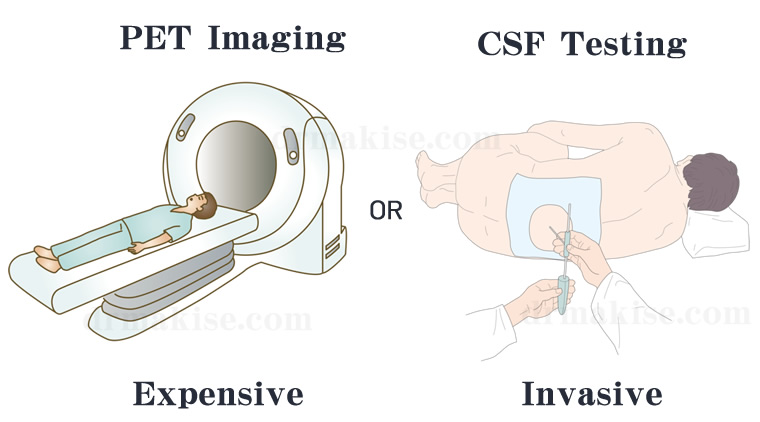
But the new revolutionary technology, “Immunoprecipitation and Mass Spectrometry (IP-MS)”, has made it possible to quantitatively measure a few Aβ-related peptides, such as Aβ1-42, Aβ1-40, and APP669-711 in plasma, even though their concentration in plasma is extremely low. Just 0.5 ml of blood is enough. This was invented by Japanese researchers led by Koichi Tanaka (https://en.wikipedia.org/wiki/Koichi_Tanaka) who was awarded the Nobel Prize in 2002 for developing a method for mass spectrometric analyses. And they found that the ratio of these peptides, APP669-711/Aβ1-42, Aβ1-40/Aβ1-42, were an accurate surrogate for the brain Aβ burden.
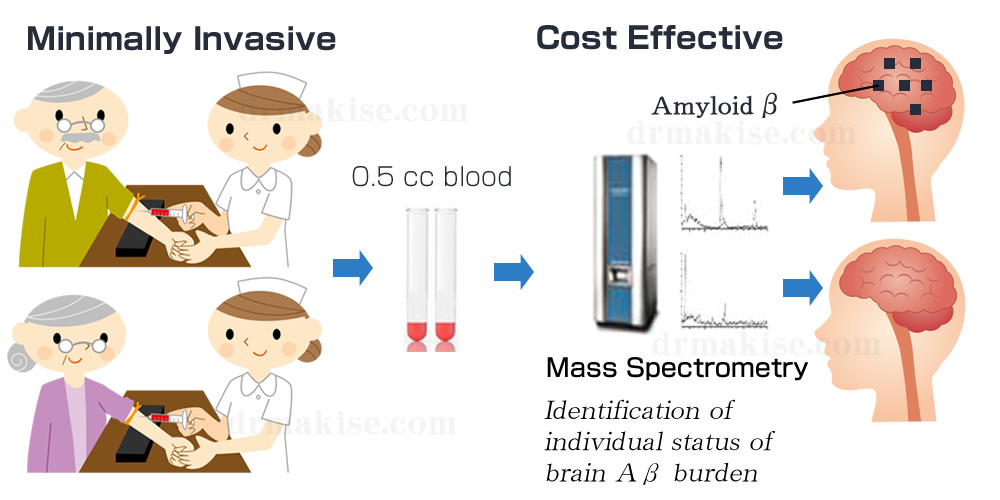
In February 2018, IP-MS method was published in the scientific magazine “Nature”: [High Performance plasma amyloid – beta biomarkers for Alzheimer’s disease]
https://www.nature.com/articles/nature25456
AD is a very tough disease. Once fully advanced, it is difficult to cure it by any modern mainstream medicines. However, if it is predicted 20~30 years prior to the onset of clinical symptoms of dementia by IP-MS method, when the patients have still almost healthy brain function, it can be treatable. At such early stage, if we begin the treatment, curing or at least delaying its progress should be possible by cheap natural herbs, vitamins/minerals, and by changing our life style to healthier one, or even by acupuncture or cranial osteopathy.
<Reference Link>:Effect of acupuncture on the ultrastructure of neurons and astrocytes in the hippocampal dentate gyrus in rats with Alzheimer’s disease induced by Aβ1-42
https://europepmc.org/abstract/med/30942016
<Reference Link>: Osteopathic Cranial Manipulative Medicine and the Blood-Brain Barrier: A Mechanistic Approach to Alzheimer Prevention
https://jaoa.org/article.aspx?articleid=2733780
In Japan IP-MS method is planned to be introduced within 10 years to routine health check for office workers, school teachers, factory workers, or any persons who wish to prevent AD. And the cost will be covered by national health insurance and it will be at most less than $10. So cheap and so safe, compared with $4,000 amyloid PET or invasive CSF testing. Surely, by 2050 it will be possible to eradicate AD from our society except vary rare cases.
(*Recently the researcher of Washington University succeeded in the similar method like IP-MS. So, US have hope, too.)
How quickly the eradication of AD is achieved depends upon how quickly we can introduce IP-MS method (or the like) to our society. In other words, it’s a matter of politics, not medicine.
It is often said that AD is expected to affect more than 115 million people all over the world by 2050. But the innovative detection method of very early stage of AD by only 0.5 cc (= 0.5 ml) blood can definitely deny this gloomy expect. On the contrary, by 2050, our world will be “AD-Zero Society”, www.adzerosociety.com. We do have hope to conquer AD!!
II. Natural Supplements to Improve Alzheimer's disease
Amyloid Hypothesis
In AD, an abnormal peptide called amyloid β (Aβ) deposits in the brain tissue and Aβ is considered to destroy nerve cells. But a lot of people die quite old with a large Aβ plaque load without showing symptoms of dementia. Therefore, recently amyloid hypothesis is being questioned by many clinical doctors. But this hypothesis is supported by mainstream researchers.
Tau Hypothesis
Abnormal tau protein forms neurofibrillary tangles inside nerve cells, which leads to microtubules disintegrate and destroy the structure of cell’s cytoskeleton. Consequently it causes the death of the nerve cells. Hyperphosphorylation of tau produces abnormal tau.
Cholinergic Hypothesis
Another cause of dementia is the decrease of acetylcholine, a neurotransmitter in the brain. Therefore, supplements that inhibit the enzymes which break down acetylcholine and supplements that increase acetylcholine itself are also important.
However, regardless of the hypothesis, if AD is predicted at very early stage, it should be possible to stop the progress of the disease by natural supplements, acupuncture, cranial osteopathy, and changing our life style. We can save millions of life and minimize the cost for medical treatments.
It would take 10~20 years for IP-MS method (or the like) to be widely prevailed to our society, and we are now not sure whether we are on the early threshold of AD when we begin to experience very mild forgetfulness, memory impairment, olfactory dysfunction, disorientation, and etc. These subtle symptoms might be the sign of AD. Therefore, when we suffer from such symptoms or if our family member suffered from AD, it is advisable to take natural supplements to prevent the progress of AD. The most of natural supplements described below are free from side effects. There’s nothing to lose just because we took these supplements, even if we do not or wouldn’t suffer from AD. Rather, they improve our general health.
Numerous natural supplements help the brain work. But, since the complex brain of a person is quite different, it is not possible to know what supplement is most effective for the individuals without actually trying it.
Try the different combinations for 2 months, and try other combinations, and try —. Eventually, you will find the best combination for you. You can get these supplements through the Internet as long as you are living in the United States or in Japan.
** If you are already taking any medications, or pregnant, or breastfeeding, or under 15 years old, be sure to consult your doctor before taking these supplements.
Ajoene | Alpinia zerumbet | Ashitaba | Astaxanthin | Bacopa | Black Cumin Oil | Buckwheat Extract | CBD | Chaga| Citicoline | Cordyceps | Corn Silk | Curcumin | DHQ | Essential Oils | Eleutherococcus Senticosus | Ferulic Acid | Ginkgo Biloba Extract | Gotu Kola | Guarana | Hericiumerinaceus | Huperzine A | Krill Oil | L-Carnitine | Magnesium L-Threonate | Melatonin | Nobiletin | Perilla Seed Oil | Phosphatidylserine | Plasmalogen | Propolis | Saffron | Silk Protein | Vitamin B12 | Vitamin B | Vitamin K
1) Ajoene


Garlic extract contains numerous health-promoting phytochemicals and has been used to improve various symptoms. It is rich in several sulfur-containing phytoconstituents — alliin, allicin, ajoene, vinyldithiin –, and flavonoids such as quercetin. Among them, ajoene exerts the strongest modulatory effects on neurotransmitter function in the brain regions that are associated with the pathogenesis of AD. It inhibits the action of acetylcholinesterase, a substance that breaks down acetylcholine, and preventing the decrease of acetylcholine in the brain. The merit of ajoene is that we can make it in our kitchen very easily.
Personally, every day I take two table spoons of ajoene oil to improve my health. I use macadamia nut oil to extract ajoene, because I like the taste of macadamia nut and its oil contains a lot of omega 7 and omega 9 unsaturated fatty acid that are not easily oxidized by heat. Camellia seed oil is also recommended, but may not be available outside of Japan.
:Chemical Constituents and Pharmacological Activities of Garlic (Allium sativum L.): A Review
2) Alpinia zerumbet (Shell Ginger)
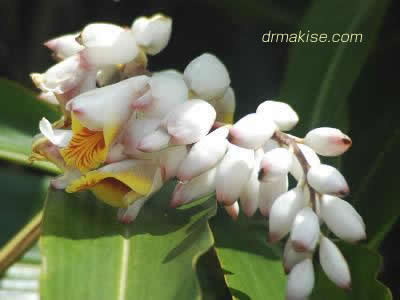
This is a perennial plant of the ginger family. But Shell Ginger is not the same as ordinary ginger. Don’t confuse it with ordinary ginger. Very much different in health benefits. This plant is an amazingly promising plant to improve AD because it contains various phytochemicals such as Quercetin, Ferulic Acid, Kaempferol. DDK (dihydro-5,6-dehydrokawain), DK (5,6-dehydrokawain), etc.
Quercetin:
: Improvement of memory recall by quercetin in rodent contextual fear conditioning and human early-stage Alzheimer’s disease patients
(https://www.ncbi.nlm.nih.gov/pubmed/27145228)
Ferulic Acid: It weakens the action of β-secretase, which leads to a reduction of the accumulation of amyloid β as is written above.
Kaempferol: This polyphenol has various effects such as anti-inflammatory, antioxidant, anti-allergic, and blood vessel strengthening effect. Recently, it has been found that Kaempferol reduces a protein called MCP-1 (Monocyte Chemoattractant Protein-1) which consists of 76 amino acids. It causes arteriosclerosis and neurodegenerative diseases. Kaempferol reduces MCP-1.
: Effect of kaempferol on the production and gene expression of monocyte chemoattractant protein-1
(https://www.ncbi.nlm.nih.gov/pubmed/15849384)
And, Kaempferol has also been shown to destabilize amyloid fibrils and prevent neurofibrillary tangles.
: Protective Effect of Kaempferol on the Transgenic Drosophila Model of Alzheimer’s Disease
(https://www.ncbi.nlm.nih.gov/pubmed/29745345)
In addition Kaempferol also inactivates β-secretase and thus reduces amyloid β production.
: Flavonols and flavones as BACE-1 inhibitors: Structure-activity relationship in cell-free, cell-based and in silico studies reveal novel pharmacophore features
(https://www.sciencedirect.com/science/article/pii/S0304416508000299#)
DDK (dihydro-5,6-dehydrokawain) , DK (5,6-dehydrokawain) :
PAK1 (p21-activated kinase 1) is involved to cause various diseases including AD. PAK1 is inhibited directly by DK and DDK that are abundant in Shell Ginger. Hispidin, a metabolite of DK, strongly inhibited PAK1, too.
: Several herbal compounds in Okinawa plants directly inhibit the oncogenic/aging kinase PAK1
(https://www.jstage.jst.go.jp/article/ddt/8/6/8_2014.01045/_article/-char/ja/)
* Novel Coronavirus (SARS-CoV-2)
COVID-19 (Coronavirus disease 2019) is an infectious disease caused by severe acute respiratory syndrome coronavirus 2 (SARS-CoV-2), a virus closely related to the SARS virus.
DDK and DK inhibit Neuraminidase by which RNA viruses multiply. We proved it 10 years ago in Okinawa, and the result was published in 2011.
Influenza A virus, B virus, and SARS-CoV-2 are RNA viruses. Therefore, Alpinia zerumbet can prevent the replication of these viruses. So, it could be recommended to take the supplement of Alpinia zerumbet to prevent influenza (Flu) and COVID-19.
: HIV-1 Integrase and Neuraminidase Inhibitors from Alpinia zerumbet
( https://pubs.acs.org/doi/abs/10.1021/jf104813k )
3) Ashitaba

Ashitaba (alleviate AD, prolong the lifespan, against Coronavirus)
Ashitaba (Angelica keiskei in Latin) is a perennial plant indigenous to the Izu island chain that is a group of volcanic islands stretching south and east from the Izu Peninsula, Japan. Now it belongs to Tokyo Prefecture, and there are flights between the islands and Tokyo. But until 150 years ago, the islands were very remote and two of them were used to place internal exiles. They were engaged in arduous compulsory labor.
To support their never waning stamina they ate this plant daily because the local people and the exiles knew of Ashitaba’s powerful tonic effects. Traditionally they boiled this plant or added it to the soup. And the powder of Ashitaba is mixed with buckwheat powder to make nutritious soba noodles even nowadays.
The most distinctive effect of Ashitaba is to stimulate the production of adiponectin especially by three chalcones ; xanthoangelol, 4-hydroxyderricin and isobavachalcone.
Adiponectin is an adipocytokine released by the adipose tissue and has multiple roles in the immune system and in the metabolic syndromes such as cardiovascular disease, diabetes, obesity, and also in the neurodegenerative disorders including Alzheimer’s disease. Adiponectin modulates memory and cognitive impairment and contributes to the deregulated glucose metabolism and mitochondrial dysfunction observed in Alzheimer’s disease.
: :Adiponectin as a new paradigm for approaching Alzheimer’s disease
(https://synapse.koreamed.org/DOIx.php?id=10.5115/acb.2013.46.4.229)
And another flavonoid, 4,4′ -dimethoxychalcone in Ashitaba, increases CLS (chronological lifespan)of budding yeast and reduces the ROS (reactive oxygen species ) levels in the yeast cells by activating autophagy. Therefore, Ashitaba is expected to contribute to human’s longevity, too.
: The flavonoid 4,4′ -dimethoxychalcone promotes autophagy dependent longevity across species
(https://www.sciencedirect.com/science/article/pii/S2468501119300379
*Novel Coronavirus (SARS-CoV-2)
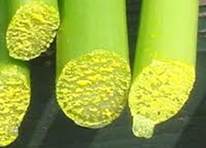
When the stalk of Ashitaba is cut, yellow sap exudes from the haulm. Now scientists have verified that the sap contains special coumarins, chalconoids, and vitamin B12 which greatly contribute to human health.
The sap was effectively used in the external treatment of smallpox. This is described in an old botanical book, Yamato-honzo, by Kaibara Ekiken (AD1630~1714) who was a doctor and a botanist in Japan. Smallpox is caused by one of two virus variants, Variola major and Variola minor that are different from SARS-CoV-2 of COVID-19. But Ashitaba may be effective against SARS-CoV-2, too.
<Reference Link>: Chalcones isolated from Angelica keiskei inhibit cysteine proteases of SARS-CoV
https://www.tandfonline.com/doi/full/10.3109/14756366.2014.1003215
<Reference Link>: Potential interventions for novel coronavirus in China: A systematic review
https://onlinelibrary.wiley.com/doi/full/10.1002/jmv.25707
Elderly patients with underlying diseases, such as Alzheimer’s disease, are most at risk for coronavirus. Therefore, Ashitaba is a good supplement, especially for Alzheimer’s disease patients.
4) Astaxanthin

This is a red carotenoid that is abundant in the algae called Haematococcus and is taken in by the food chain as algae → plankton → krill, cherry shrimp → salmon, trout. Salmon and salmon roe are red. That redness is due to this carotenoid.
The antioxidant effect of astaxanthin is said to be 500 to 1000 times stronger than that of vitamin E. In particular, it has excellent ability to remove “singlet oxygen: 1O2” which is very unstable ROS (Reactive Oxygen Radical).
Of special note is that astaxanthin can pass through the BBB (blood-brain barrier) and the blood-retinal barrier and reach directly the nerves in the brain and retina. This is important to treat AD.
<Reference Link>: On the Neuroprotective Role of Astaxanthin: New Perspectives?
(https://www.mdpi.com/1660-3397/16/8/247/htm)
Astaxanthin improves insulin resistance in hippocampus.
<Reference Link>: Neuroprotective role of astaxanthin in hippocampal insulin resistance induced by Aβ peptides in animal model of Alzheimer’s disease
(https://www.sciencedirect.com/science/article/pii/S0753332218343695)
Astaxanthin also facilitates the generation of NO (Nitric Oxide) in endothelial cells. Therefore, it dilates blood vessels and lowers blood pressure.
When taking DHA /EPA, which are omega-3 unsaturated fatty acids, it is recommended to take them together with astaxanthin to prevent oxidation of these omega-3 unsaturated fatty acids.
Astaxanthin has also been shown to increase good cholesterol (HDL).
In the past, astaxanthin was extracted from krill, but since it became possible to artificially culture a large amount of Haematococcus, inexpensive astaxanthin supplements came to market.

When I had a small research project with University of Hawaii located in Honolulu (Oahu Island), I once visited a factory on Hawaii Island where dazzling UV rays shined down. It seems that ultraviolet rays are much harder on Hawaii Island (famous for triathlon) than on Oahu Island. The factory was producing astaxanthin from Hematococcus that contains a large amount of astaxanthin to eliminate singlet oxygen (1O2 ) induced by the strong ultraviolet rays.
5) Bacopa (Bacopa monnieri)

This is a perennial, creeping herb that grows in marshy areas in India, Sri Lanka, Pakistan, Vietnam, Taiwan, and China. It is also found in Florida, Hawaii.
Bacopa has been traditionally used in Ayurveda medicine to improve memory and to treat various diseases just like above mentioned Gotu Kola. Preliminary clinical research found that Bacopa improved cognition.
The main component is bacoside, a type of terpenoid saponin, which is thought to cross the BBB (blood-brain barrier) and exerts various effects. Anti-anxiety effect and tranquilization effect are also found. Therefore, it is being researched as a safe herb in the treatment of ADHD (Attention Deficit Hyperactivity Disorder), too.
<Reference Link>: Insights Into the Molecular Aspects of Neuroprotective Bacoside A and Bacopaside I
(https://www.ingentaconnect.com/contentone/ben/cn/2019/00000017/00000005/art00006)
* Note: Do not take this herb if you have thyroid problems.
6) Black Cumin Oil
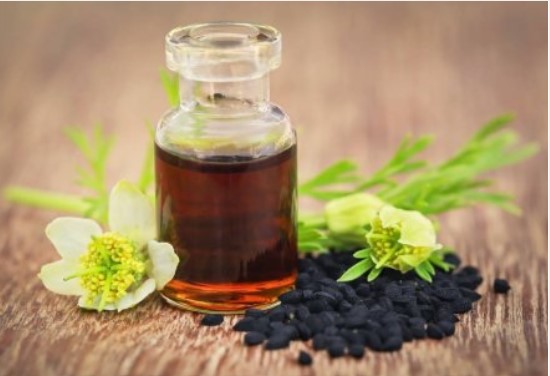
This oil is popular in the Middle East. Black Cumin (also known as Nigella sativa, or Black Caraway) is an annual herb that originates in Egypt and surrounding areas. It was said that this oil works for anything except death. It seems that it was used even during Tutankhamen period in ancient Egypt (14th century BC). The distinguishing feature of this oil is that it contains a substance called Thymoquinone (TQ). This makes black cumin oil different from omega-3 unsaturated fatty acid oils such as Fish Oil, Krill Oil, Flaxseed Oil, Perilla Oil, and Sacha Inch Oil.
“This oil stimulates the body’s energy, relieves fatigue, cleanses and detoxifies it” says Avicenna (Ibn Sina), an Islamic physician who wrote medical books called “The Canon of Medicine” and “The Book of Healing”, etc. about 1000 years ago. “It promotes healing of various diseases such as respiratory, skin, fever, wounds, parasites, headaches”. So to speak, it is a panacea for Arabian Nights.
TQ has the effect of protecting brain nerve cells from neurocytotoxicity of amyloid β. Researchers at the Tokyo University of Technology have discovered that TQ is effective in AD.
<Reference Link>: Thymoquinone protects cultured rat primary neurons against amyloid β-induced neurotoxicity.
(https://www.ncbi.nlm.nih.gov/pubmed/23537659)
This oil also contains THQ (Thymohydroquinone), which has an inhibitory action on acetylcholinesterase, which prevents dementia.
7) Buckwheat Extract
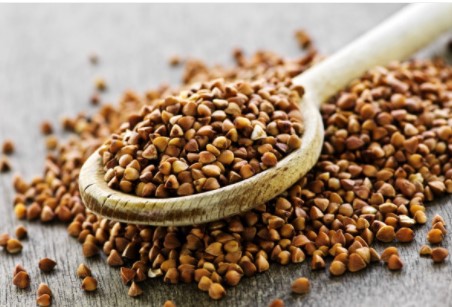
With aging, cognitive function declines and feeling of happiness is likely to decline. This phenomenon is also associated with a decrease in dopamine, one of the neurotransmitters in the brain. After the age of 45, everyone is producing less dopamine, and at the same time, fun, happiness, healthy sexual desire in their youth gradually fade away.
And brain function ages. When it gets much worse, the balance function of the body weakens. In particular, monoamine oxidase-B (MAO-B), increased by 70% in the white matter of the brain of AD patients, and also increased by 20-50% in the gray matter. MAO-B expression is increased in astroglia adjacent to amyloid plaques in the brain with AD. Due to the increased MAO-B, dopamine gets more easily decomposed. By preventing the increase of MAO-B, cognitive function could be restored, and the gorgeous and vibrant sensation of youth should be maintained.
Buckwheat extracts work effectively against various diseases of nerve system by suppressing the enzyme phosphodiesterase-4. It is worth noting that buckwheat extracts improve the function of endothelial cells in the cardiovascular system, too. It is the extract of flavone isovitexin, etc. contained in the exposed parts of air such as leaves and stems of special types of buckwheat (Avena sativa) that really works, not oatmeal made by threshing ordinary buckwheat and often used for breakfast.
Caution: If you are diagnosed with Parkinson’s disease or Dementia with Lewy bodies (DLB) and are taking medications, be sure to consult your doctor before taking this supplement.
8) CBD (Cannabidiol)

Endocannabinoids are molecules made by our bodies. They act as neuromodulators on vertebrate central and peripheral nerves. The Endocannabinoid system (ECS) is a complex cell-signaling system and considered to play a pivotal role to contribute to homeostasis. The two important endocannabinoids of ECS are 2-arachidonoylglyerol and anandamide which are eicosanoids.
There are two endocannabinoid receptors: CB1 and CB2. CB1 is for anandamide, CB2 is for 2-arachidonoylglyerol. The former is predominantly found in the central nervous system, and the latter found in the peripheral nervous system and immune cells.
Cannabinols in hemp and marijuana are similar to endocannabinoids. Two major cannabinols, CBD (cannabidiol) and THC (tetrahydrocannabinol) exert various effects on ECS when these cannabinoids are administered to our bodies.
Because THC interacts with ECS by binding to the two receptors (CB1 and CB2) that are for endocannabinoids, THC brings about not only strong positive effects but also strong negative effects on the body and mind. Sometimes it gets us “high” and causes paranoia and anxiety. Therefore, many countries and many states in the United States ban marijuana in which more THC is contained than in hemp. But CBD is different. Unlike THC, CBD doesn’t bind to CB1 or CB2 receptors, and CBD blocks an enzyme that breaks down anandamide which is one of the key endocannabinoids and is regarded as the ‘bliss molecule’. Then, CBD allows for more benign effects to be present in our bodies through ECS. The Endocannabinoid system (ECS) is considered to be involved with various diseases including dementia. The low endocannabinoids may cause migraine, fibromyalgia, irritable bowel syndrome, and chronic fatigue syndrome of which true etiology is still unknown. And disturbed ECS definitely worsens AD, because ECS facilitates the neurogenesis of hippocampal granule cells.
Probable Alzheimer’s disease and Dementia with Lewy bodies (DLB) can be categorized as “Low Endocannabinoids Syndrome”.
: In vivo Evidence for Therapeutic Properties of Cannabidiol (CBD) for Alzheimer’s Disease
(https://www.frontiersin.org/articles/10.3389/fphar.2017.00020/full)
: The Role of Endocannabinoid Signaling in the Molecular Mechanisms of Neurodegeneration in Alzheimer’s Disease
(https://content.iospress.com/articles/journal-of-alzheimers-disease/jad141635)
9) Chaga (Inonotus obliquus)
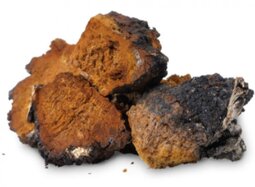
Mushrooms have mysterious healing power that the above mentioned Lion’s Mane Mushroom shows. Chaga also does have the effect. Chaga is a parasitic fungus on birch, found in Siberia, Poland, Finland, Estonia, northern part of China and Japan. At first glance, it looks like a coal-like black lump that protrudes from the bark. The image is quite different from that of ordinary mushrooms. Siberian farmers have long drunk Chaga tea traditionally. Russian Nobel laureate Alexander Solzhenitzyn is credited with informing the West about the health benefits of Chaga in his book, “The Cancer Ward”. In Estonia, one of the three Baltic States, Chaga is by far the most used alternative therapy for cancer.
<Reference Link>: Estonian folk traditional experiences on natural anticancer remedies: From past to the future
(https://www.tandfonline.com/doi/full/10.3109/13880209.2013.871641)
But Chaga is effective not only in the treatment/prevention of cancer but also of dementia. Because Chaga contains a number of health-promoting substances such as β-glucan, saponin, inositol, lignin, flavonoids, triterpenoids, and SOD. Synergistic effects of these various substances brings about alleviation of dementia.
Japanese researchers found Chaga decreased the effect of AChE (acetylcholinesterase) and restored the level of acetylcholine. This effect is the same as that of Huperzine A below mentioned.
<Reference Link>: Amelioration of scopolamine induced cognitive dysfunction and oxidative stress by Inonotus obliquus – a medicinal mushroom.
(https://www.ncbi.nlm.nih.gov/pubmed/21779570)
10) Citicoline
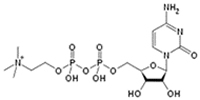
Citicoline, also called CDP-Choline, stimulates the production of acetylcholine and activates brain metabolism. It has been confirmed to improve memory and concentration. When taken orally as a supplement, citicoline is hydrolyzed into choline and cytidine in the intestine. Then, the two substances are re-synthesized into citicoline in the brain after passing through the BBB (blood-brain barrier).
In the hippocampal area that is responsible for memory of rats with AD, citicoline has been confirmed to prevent neuronal degeneration. In mild ischemic brain disease, citicoline protects neurons. It is also effective for glaucoma and amblyopia.
When taken with an acetylcholinesterase inhibitor, the brain function is improved compared to the administration of the acetylcholinesterase inhibitor alone. This is an Italian study of 448 AD patients over 65 years old.
<Reference Link>: The Citicholinage Study: Citicoline Plus Cholinesterase Inhibitors in Aged Patients Affected with Alzheimer ‘s Disease Study
(https://www.ncbi.nlm.nih.gov/pubmed/28035929)
Therefore, it is recommended to take it with huperzine A which has the acetylcholinesterase inhibitory effect. Citicoline is a very safe substance and there is no problem up to 2000mg a day.
11) Cordyceps - The Emperor's Fungus for Health and Immortality

Cordyceps is a genus of parasitic fungi that grows on the living larvae of insects. In Japanese it is called “ ” which means ‘in winter an insect, in summer a grass’, because Cordyceps is insect-like during the winter and grass-like during the summer. It grows mainly in the meadows above 3,000 to 4,000 meters in the Himalayan regions such as Tibetan Plateau, Nepal, Bhutan, and also in Sichuan, Yunnan of China.
” which means ‘in winter an insect, in summer a grass’, because Cordyceps is insect-like during the winter and grass-like during the summer. It grows mainly in the meadows above 3,000 to 4,000 meters in the Himalayan regions such as Tibetan Plateau, Nepal, Bhutan, and also in Sichuan, Yunnan of China.
The most important substance of Cordyceps is Cordycepin that is also called 3′-deoxyadenosine. It has a structure in which the hydroxyl group (OH group) has been deleted from the 3′ position of one of the adenosine nucleosides.
Although in vitro, methanol extract of Cordyceps militaris stimulates primary neurite sprouting and extension of Neuro2A cells in a dose-dependent manner. And it alleviates decrease in cholinergic immunoreactivity in the hippocampus.
Cordyceps used to be worth more than 4 times its weight in silver. Because now (2020) 1 gram of Cordyceps costs more than $80, it is called ‘Soft Gold’. In addition, lots of fake and defective Cordyceps are on the market in China, making it difficult to get the genuine ones. Therefore, in 1993 the team of Japanese and Chinese researchers succeeded in the artificial culture of Cordyceps militaris by using aseptically-cultured silkworms. This type of Cordyceps contains the highest amount of Cordycepin. But mycelia (root part) cultured in a synthetic medium, or fruiting bodies cultured in a medium such as cereals or grains don’t contain enough Cordycepin. Please be careful when you choose the supplement of Cordyceps.
For detailed information, please link to “Cordyceps”. (http://en.drmakise.com/cordyceps/)
<Reference Link>: Effects of cordycepin on spontaneous alternation behavior and adenosine receptors expression in hippocampus
(https://www.sciencedirect.com/science/article/abs/pii/S0031938417304171)
<Reference Link>:Protective role of Cordyceps militaris in Aβ1–42-induced Alzheimer’s disease in vivo
(https://link.springer.com/article/10.1007/s10068-018-0521-z)
<Reference Link>:Cordyceps Militaris improves neurite outgrowth in Neuro2A cells and reverses memory impairment in rats
(https://link.springer.com/article/10.1007/s10068-011-0221-4)
12) Corn Silk
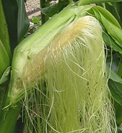
Corn silk is the white thread-like strands of plant material that grow underneath the husk of a fresh ear of corn. Traditional Chinese and Native American medicine have been using this natural material to treat various ailments. Especially traditional Chinese medicine employed it to alleviate dementia. Its mechanism has not yet been well understood. In 2016, however, the researchers of University of Hawaii discovered how it did work to improve AD. The keystone is GSK3β (glycogen synthase kinase-3β).
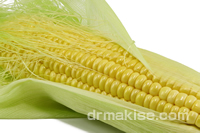
Extracts of corn silks inhibit GSK3β.
GSK3β is a multifunctional protein (serine/threonine kinase) which has very wide importance in biological processes such as cell differentiation, neuronal functions, embryonic development, apoptosis, and insulin response. It is involved with various diseases such as AD, diabetes, obesity, cardiovascular diseases, inflammation and pain, schizophrenia, bipolar disorders, and cancers.
Many recent studies have also shown the relation between GSK3β and ECS (endocannabinoid system) which is responsible for regulation of many physiological effects in the central and peripheral nervous system and this may be a subject of further research and interests for many researchers.
Neurofibrillary tangles aggregated by intracellular hyperphosphorylated tau proteins lead to microtubule destruction and neuronal dysfunction, consequently to AD, “Tau Hypothesis”.
Abnormal hyperhosphorylaion of tau is caused by GSK3β. Therefore, the development of GSK3β inhibitors attenuating tau hyperphosphorylation is a promising therapeutic strategy for AD treatment. Here, corn silk plays an important role.
: C-Glycosylflavones Alleviate Tau Phosphorylation and Amyloid Neurotoxicity through GSK3β Inhibition
(https://pubs.acs.org/doi/10.1021/acschemneuro.6b00059)
Recently the researchers of AD are shifting their researches toward investigation of Tau Hypothesis from Amyloid Hypothesis. They begin to think that accumulation of amyloid β (Aβ) is not the true cause but the consequence of neurofibrillary tangles aggregation caused by abnormal hyperhosphorylaion of tau protein or immune response against infection of bacteria (Porphyromonas gingivalis), because all attempts to develop Aβ-targeting drugs to treat AD have ended in failure. Literally all the drugs failed.
: Reconsideration of Amyloid Hypothesis and Tau Hypothesis in Alzheimer’s Disease
(https://www.frontiersin.org/articles/10.3389/fnins.2018.00025/full)
13) Curcumin

It is often said that “Indians have less AD than any other nations because they eat a lot of curries.” How about the truth? Was it medically proven? Japanese also often eat curry, but they suffer from AD. But it looks pretty close to the truth.
Curcumin, one of the ingredients in curry powder, has great medicinal properties. It has a strong antioxidant, anti-inflammatory, anti-cancer effect. It improves liver function and increases glutathione production.
Turmeric is a plant belonging to the ginger family. The scientific name is Curcuma longa L. Turmeric rhizome is powdered and dried and used as a spice.
Turmeric contains curcuminoid which is a kind of yellow polyphenol. Curcuminoid is a general term for curcumin, demethoxycurcumin, and bisdemethoxycurcumin. Curcumin is the most common, accounting for 75% of curcuminoids.
It is traditionally known that curcumin has a good effect especially on cognitive function, and it has often been used since ancient times in Ayurveda medicine. Therefore, a lot of researches have been done. In 2018, researchers at ‘Texas Tech University Health Sciences Center’ experimented with mice and humans, and proved its efficacy clearly. Curcumin crosses the BBB (blood-brain barrier) and reaches brain cells, where it acts to prevent amyloid β aggregation and degeneration from aging.
: Protective Effects of Indian Spice Curcumin Against Amyloid Beta in Alzheimer’s Disease
(https://www.ncbi.nlm.nih.gov/pmc/articles/PMC5796761/)
The absorption of curcumin from the intestine used to be difficult, but recently, nano-sized and cyclodextrin inclusion have been made and the absorption became very good. And if curcumin is taken together with piperine, the bioavailability of curcumin increases.
Caution: If you are taking medications such as phenytoin (Dilantin), propranolol (Inderal), or theophylline, do not take curcumin. Also, if you are taking anticoagulants or antiplatelet drugs such as aspirin, heparin, warfarin, curcumin may increase the risk of bleeding, so be sure to consult with your doctor.
14) Dihydroquercetin (DHQ)

Also called taxifolin, it has a structure similar to quercetin and shows the same effect. However, quercetin does not dissolve in water, but DHQ dissolves quickly and reaches cells easily. Moreover, because it is stable, it has a long-lasting effect. The capillary protective effect is 3~5 times stronger than that of quercetin. Siberian larch is its raw material.
It detoxifies strong peroxide such as superoxide. And it reduces the action of cyclooxygenase-2 (COX-2), an enzyme that metabolizes unsaturated fatty acids into malignant inflammatory eicosanoids, and exhibits potent anti-inflammatory effect. DHQ was given as a supplement to Russian athletes for the 2008 Beijing Olympics.
(Above mentioned Eleutherococcus senticosus was used to strengthen the Russian athletes of the 1980 Moscow Olympic. Rhodiola rosea also has been used traditionally in Russia and Eastern Europe. I call these three supplements — DHQ, E. senticosus, Rhodiola rosea— “Russian Secret Trio” to fight against the Western athletes. )
DHQ stimulates the production of glutathione that has a strong detoxification effect and suppresses the accumulation of amyloid β. And it strengthens memory.
In addition, by suppressing the production of apolipoprotein B, it prevents the increase of LDL and makes the blood vessels strong.
It also has anti-allergic effects.
Especially good compatibility with vitamin C, double the antioxidant power. Take it together with DHQ.
<Reference Link>: Taxifolin prevents β-amyloid-induced impairments of synaptic formation and deficits of memory via the inhibition of cytosolic phospholipase A2/prostaglandin E2content
(https://link.springer.com/article/10.1007/s11011-018-0207-5)
15) Essential Oil

Since a long time ago, even in ancient Egypt and Persia, essential oils have been used to activate the brain function. They didn’t understand the mechanism, but they empirically knew the effectiveness and safety of aromatherapy.
In the nasal cavity, aromatic molecules of essential oils bind to olfactory epithelium acceptors (olfactory nerves) which are illustrated as fine yellow fiber bundles in the figure. The axons of olfactory nerves penetrate the small foramina in the cribriform plate of the ethmoid bone and enter the cranial cavity, reaching the olfactory bulb which relays sensory data to the various parts of the brain: amygdala, limbic system, hippocampus, hypothalamus with consequent release of neuromediators.
Even in the early stages of AD, neurofibrillary tangles aggregated by intracellular hyperphosphorylated tau proteins are present in the entorhinal cortex, hippocampus, amygdala, and thalamus of the patients. This seems to cause the olfactory dysfunction in AD patients. Often AD begins with abnormal olfaction (dysosmia). Therefore, some researchers are trying to develop an early detection method to predict AD by checking patient’s olfaction. If combined with IP-MS Method, the accuracy of the diagnosis of AD would be much more improved.
: Olfactory dysfunction as a predictor of neurodegenerative disease
(https://link.springer.com/article/10.1007/s11910-996-0018-7)
To improve mental problems, essential oils especially of Melissa officinalis (Lemon balm) and Lavandula officinalis (Lavender) have been used in traditional medicine for centuries. And Rosmarinus officinalis (Rosemary), Salvia lavandulifolia (Spanish sage), Persicaria hydropiper (water-pepper or marsh pepper knotweed) are also effective. Aromatic molecules of these plants are considered to promote neurogenesis in the dentate gyrus of the hippocampus damaged by neurofibrillary tangles. The olfactory system has a unique capacity for neurogenesis. Aromatic molecules stimulate neuropoiesis there. Put hot water in a glass, drip a few drops of essential oils, and inhale the steam. Or you can drip 2~3 drops of oil on a handkerchief and place it on your nose and inhale the aroma. Also, put a few drops in the bath. If the aroma is too strong, reduce the drop.
: Effect of aromatherapy on patients with Alzheimer’s disease
(https://onlinelibrary.wiley.com/doi/full/10.1111/j.1479-8301.2009.00299.x)
: Aromatherapy and Aromatic Plants for the Treatment of Behavioural and Psychological Symptoms of Dementia in Patients with Alzheimer’s Disease: Clinical Evidence and Possible Mechanisms
(https://www.hindawi.com/journals/ecam/2017/9416305/)
16) Eleutherococcus senticosus (Siberian Ginseng)
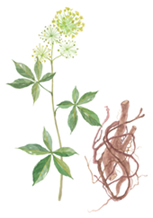
Eleutherococcus senticosus is a deciduous shrub that grows in the Far East region of Russia (Amur, Sakhalin), China (Heilongjiang, Jilin Provinces), and Japan (Hokkaido). The rhizomes and roots of E. senticosus are recorded in the Chinese and Japanese pharmacopoeias as a treatment for various diseases. This herb became famous after extensive research by the former Soviet Academy of Sciences in the 1960s and it was used to strengthen the Russian athletes of the 1980 Moscow Olympic.
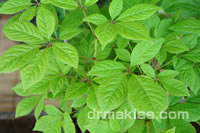
The leaves contain effective substances that reconstruct neuronal networks destroyed by amyloid β (Aβ). The researchers of Institute of Natural Medicine, University of Toyama (Japan) proved that eleutheroside B, eleutheroside E and isofraxidin of E. senticosus had protective effects against Aβ(25–35)-induced atrophies of axons and dendrites in the experiment of cultured cortical neurons of rat.
: Active components from Siberian ginseng (Eleutherococcus senticosus) for protection of amyloid β(25-35)-induced neuritic atrophy in cultured rat cortical neurons.
They confirmed eleutheroside B was effective for reconstruction of neuronal network reconstruction.
(https://www.ncbi.nlm.nih.gov/pubmed/21301979)
: New Age Therapy for Alzheimer’s Disease by Neuronal Network Reconstruction
(https://www.jstage.jst.go.jp/article/bpb/39/10/39_b16-00438/_html/-char/en)
Caution: Avoid this herb if you are taking antiepileptic drugs, warfarin, and if you suffer from hypertension.
17) Ferulic Acid (FA)

The name of ferulic acid comes from its first discovery in 1866 from a plant with the scientific name Ferula assa-foetida. FA is a kind of polyphenols present in cell walls of various plants and has strong antioxidant and anti-inflammatory effects. It has been demonstrated in animal experiments that FA can reduce the accumulation of Aβ by weakening the effect of β-secretase that is a proteolytic enzyme.
: Ferulic Acid Is a Nutraceutical β-Secretase Modulator That Improves Behavioral Impairment and Alzheimer-like Pathology in Transgenic Mice.
(https://www.ncbi.nlm.nih.gov/pubmed/23409038)
When amyloid precursor protein (APP) is cleaved by β-secretase, γ-secretase works to produce Aβ and may cause AD. (Aβ is not produced if cleaved with α-secretase). Therefore, inhibiting β-secretase is effective in the treatment of AD.
: Ferulic Acid: A Hope for Alzheimer’s Disease Therapy from Plants
(https://www.mdpi.com/2072-6643/7/7/5246)
18) Ginkgo Biloba Extract

The flavonoids ginkgo-flavone glycosides and the terpene gingolide improve blood flow in the brain and prevent unnecessary platelet aggregation. Another terpene bilobalide is said to have the ability to repair damaged nerve cells and prevent AD. In animal experiments, it has been confirmed that levels of dopamine are raised by Ginkgo Biloba Extract (GBE). It also contains lot of kaempferol, which is described in Shell Ginger.
Although the efficacy of GBE for AD treatment is still controversial, GBE alleviates at least aluminum-induced neurotoxicity in rats. Aluminum is considered to be one of the culprit metals that induce Aβ deposition in the human brain. The researchers observed a significant decline of Aβ aggregation in hippocampal and cortical regions of the rats’ brain with GBE supplementation. Of course, human is different from rat. But basic physiology is the same. Therefore, those who are engaged in any metal processing industry are recommended to take GBE for prevention.
It is safer not to use it together with aspirin. It has been reported in rare cases that blood flow becomes too good and causes cerebral hemorrhage and fundus bleeding.
It is better not to take it before bedtime. This is because the blood flow in the brain becomes too good to sleep well.
* It improves blood circulation and improves blood flow in the penile arteries of the penis. Therefore, it is effective for ED (erectile dysfunction).
<Reference Link>: Ginkgo biloba attenuates aluminum lactate-induced neurotoxicity in reproductive senescent female rats: behavioral, biochemical, and histopathological study
(https://link.springer.com/article/10.1007/s11356-019-05743-5)
19) Gotu Kola
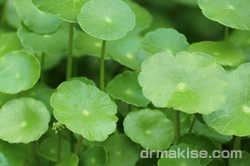
Its scientific name is Centella asiatica. A perennial plant of the family Apiaceae that grows in Madagascar, Sri Lanka and India where this plant is often used as herbal ingredients. Gotu Kola from Madagascar is especially famous.
Gotu Kola is called “Brahmi”, too, which means wisdom in Sanskrit. It is one of the most important herbs in Ayurveda medicine. In ancient times, it was used for leprosy and syphilis. In addition, Gotu Kola is sad to activate the 7th chakra (crown chakra), which exists at the top of the head.
The chakra is said to improve memory and insight, and deepens thinking ability. It also has a sedative effect, which eases anxiety.
Gotu Kola can reduce Aβ. The effects are due to functional phytochemical components such as asiatic acid, asiaticoside, madecasic acid and madecasoside, which have been confirmed in many experiments. These effective substances can get through the BBB (blood-brain barrier) and work in the brain.
<Reference Link>: Structure–activity relationship study of asiatic acid derivatives against beta amyloid (Aβ)-induced neurotoxicity
(https://www.sciencedirect.com/science/article/pii/S0960894X99006587&)
20) Gaurana
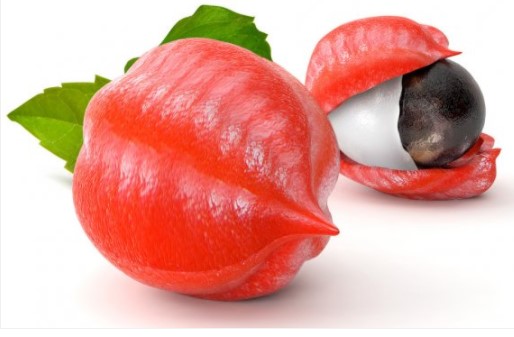
Guarana is a climbing plant in the family Sapindaceae, native to the Amazon basin and especially common in Brazil. Guaraní people, indigenous peoples of South America, cultivated this plant and used its fruit traditionally. They are said to have carried around during the war against other tribes.
Brazil and Paraguay produce several soft drink brands from the crushed seeds of guarana. They drink them every day like coffee. Brazilian researchers have found using nematodes that guarana blocks the toxicity of amyloid β.
<Reference Link>: Guarana (Paullinia cupana Mart.) Protects against amyloid-β toxicity in Caenorhabditis elegans through heat shock protein response activation
(https://www.tandfonline.com/doi/abs/10.1080/1028415X.2018.1517473)
It improves long-term memory, too. Platelet aggregation inhibitory effect has also been confirmed, and it is effective for recovery from fatigue, stamina enhancement, blood purification, flatulence, obesity, indigestion, migraine, arteriosclerosis, etc., too. It is wise not to take this supplement at night, because the blood flow of the brain becomes too good and the brain gets up and someone cannot sleep.
21) Hericium erinaceus (Lion's Mane Mushroom or Yamabushitake)
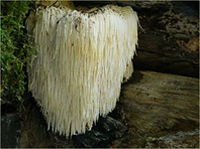
This mushroom is an edible and medicinal mushroom belonging to the tooth fungus group. Native to North America, Europe and Asia. In the wild, these mushrooms are common during late summer and fall on hardwoods, particularly American beech. In English it is called Lion’s Mane Mushroom, in Japanese Yamabushitake that is called so because it resembles the decoration of a crown worn by Yamabushi (Japanese mountain ascetic hermits).
Generally speaking, the active ingredient in mushrooms is the polysaccharide β-glucan, which is especially evaluated to increase immunity. Hericium erinaceus also contains five types of polysaccharides, which are alleged to have an anti-cancer effect. However, for the brain, the components such as Helicenone and Erinasin that are found only in this mushroom are important. These two substances promote the production of NGF (Nerve Cell Growth Factor), thus preventing the decrease of neurons and delaying the progression of dementia with AD.
<Reference Link>: Improving effects of the mushroom Yamabushitake (Hericium erinaceus) on mild cognitive impairment: a double-blind placebo-controlled clinical trial.
(https://www.ncbi.nlm.nih.gov/pubmed/18844328)
It also lowers LDL cholesterol, preventing cerebrovascular disorders caused by arteriosclerosis and hyperlipidemia.
In addition, it is effective in allergic symptoms and infectious diseases such as influenza.
22) Huperzine A
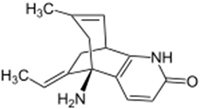
Huperzine A is a kind of alkaloid contained in fern plant (Huperzia serrata). It has AChE (acetylcholinesterase) inhibitory effect. Acetylcholine is an important transmitter in the brain, and the enzyme that breaks it down is acetylcholinesterase. Huperzine A inhibits the activity of that enzyme. Therefore, acetylcholine is not easily decomposed.
The famous AChE inhibitors are the pharmaceutical drugs donepezil hydrochloride (trade name: Aricept) and galantamine (trade name: Razadyne). Huperzine A has the same mechanism of action.
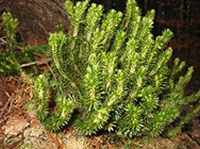
Huperzine A is a kind of alkaloid contained in fern plant (Huperzia serrata). It has AChE (acetylcholinesterase) inhibitory effect. Acetylcholine is an important transmitter in the brain, and the enzyme that breaks it down is acetylcholinesterase. Huperzine A inhibits the activity of that enzyme. Therefore, acetylcholine is not easily decomposed.
The famous AChE inhibitors are the pharmaceutical drugs donepezil hydrochloride (trade name: Aricept) and galantamine (trade name: Razadyne). Huperzine A has the same mechanism of action.
23) Krill Oil (omega-3 unsaturated fatty acid : DHA / EPA)

DHA (docosahexaenoic acid)/EPA (eicosapentaenoic acid), omega-3 unsaturated fatty acids, are abundant in Fish Oil and are essential for maintaining cerebrovascular elasticity. They also promote the production of benign eicosanoids and suppress the production of malignant eicosanoids, so they have a wonderful anti-inflammatory effect.
EPA cannot pass through the BBB (blood-brain barrier), but DHA passes through it, and is particularly contained in neurons in the hippocampal region that controls memory. However, DHA is significantly deficient in hippocampal neurons in patients with AD.
DHA has been shown to be effective in the treatment of cognitive impairment of AD and cerebrovascular disorders.
Recently, I recommend Krill Oil instead of Fish Oil. Krill is a small crustacean with a length of 1.2~2.4 inch, a kind of shrimp. With regard to fish oil, it is often said that care should be taken not to use poor products because it contains marine pollutants, but especially in the case of Antarctic Krill, the cleanliness is excellent.
In addition, DHA and EPA in Krill Oil are bound to phospholipids, so they dissolve in water and are easily absorbed. And astaxanthin is included, making it even more effective.
Astaxanthin is a red substance that can be seen in the picture. However, if you are allergic to shrimp and crabs, fish oil is safer.
<Reference Link>: The importance of fish and docosahexaenoic acid in Alzheimer disease
(https://academic.oup.com/ajcn/article/85/4/929/4649017)
Be sure to take DHA / EPA supplements immediately after meals, whether Krill Oil or Fish Oil. DHA and EPA degraded by cholesterol esterase, a type of pancreatic lipase secreted by dietary stimulation, are absorbed from the small intestine along with bile acids. In other words, if there is no stimulation from meals, DHA / EPA will not be sufficiently absorbed. And it is recommended to take omega-3 unsaturated fatty acids with astaxanthin.
<Reference Link>: Astaxanthin limits fish oil-related oxidative insult in the anterior forebrain of Wistar rats: Putative anxiolytic effects?
(https://www.sciencedirect.com/science/article/pii/S0091305711001511#!)
24) L-Carnitine
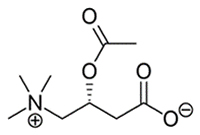
Acetyl-L-carnitine is a combination of L-carnitine and an acetyl group (CH3CO-) that promotes the production of acetylcholine in the brain. ALC gets through the BBB (blood-brain barrier). Acetylcholine is a neurotransmitter released from the terminals of parasympathetic and motor nerves, and is essential for the normal functioning of the nervous system.
Also, it removes the waste accumulated in the mitochondria of the brain cells, so if this is insufficient, the brain cells will be fragile.
L-carnitine is a vitamin-like substance that is synthesized in the liver from lysine and methionine, and is extremely abundant in skeletal and cardiac muscles. It works as a cofactor in fat metabolism, burns fat and is deeply involved in ATP production. About 10% of carnitine in the body is said to exist in the form of ALC.
However, L-carnitine decreases with age, and if you are in your 50s, it is better to supplement 100mg a day. It is abundant in beef, mutton, and red shellfish.
When taken together with α-lipoic acid, the efficacy of ALC improves. This combination is recommended especially for diabetics.
However, L-carnitine decreases with age, and if you are in your 50s, it is better to supplement 100mg a day. It is abundant in beef, mutton, and red shellfish.
When taken together with α-lipoic acid, the efficacy of ALC improves. This combination is recommended especially for diabetics.
<Reference Link>: Long‐term acetyl‐L‐carnitine treatment in Alzheimer’s disease
(https://n.neurology.org/content/41/11/1726)
25) Magnesium L-Threonate
There are 325 enzymes that are directly dependent on magnesium in the body. Compared to about 200 enzymes that depend on zinc, about 20 enzymes depending on copper, and 10 enzymes depending on selenium, 325 is really a big number.
Therefore, it is estimated that magnesium is involved with thousands of chemical reactions, including the metabolism involving magnesium indirectly. In other words, if this mineral is not enough, the physiological function is paralyzed.
You will find several magnesium supplements in any vitamin shops. Magnesium citrate, magnesium glycinate, magnesium malate, magnesium L-threonate, magnesium ascorbate, and magnesium aspartate. Among these, magnesium L-threonate works particularly well in the brain and nervous system. It has been shown to support brain synaptic density in brain areas related to memory. Although its price is three to four times more expensive than other types of magnesium, I would like to recommend it to prevent forgetfulness and dementia.
<Reference Link>: Elevation of brain magnesium prevents synaptic loss and reverses cognitive deficits in Alzheimer’s disease mouse model
(https://molecularbrain.biomedcentral.com/articles/10.1186/s13041-014-0065-y)
* Serum magnesium is not examined during regular medical examinations. However, ALP (alkaline phosphatase) is often examined. So if the ALP value is quite low, please suspect the possibility of magnesium shortage, because there is magnesium in the active site of ALP.
26) Melatonin
Sleep quality is closely related to brain health. Of course, there are some individual differences, but 7 hours of sleep seems to be the best. Using data from nine cohort studies, including more than 320,000 people in East Asia, the association between sleep time and death is analyzed, and it was found that the risk of death was significant at other sleep times compared to a 7-hour sleep.
<Reference Link>: Association of Sleep Duration With All- and Major-Cause Mortality Among Adults in Japan, China, Singapore, and Korea
https://pubmed.ncbi.nlm.nih.gov/34477853/
The hormone most related to sleep is melatonin. Melatonin (ML) is released primarily from the pineal gland (also produced in the intestine). ML is a multifunctional molecule regulated by circadian rhythms and plays a neuroprotective role in the pathogenesis of AD. Administration of ML may reduce Aβ accumulation and enhance cognitive function through following various mechanisms:
1) Promotes α-secretase function and enhances non-amyloidogenic processing.
2) Inhibits β-secretase function and reduces amyloidogenic processing
3) Inhibits APP expression and decreases Aβ production
4) Inhibits Aβ monomer assembly and reduces toxic Aβ oligomer formation
5) Promotes Aβ clearance — glymphatic clearance, meningeal lymphatic clearance, blood-brain barrier function, autophagosome-lysosome system
6) ML ameliorates Aβ oligomer-induced neurotoxicity
Melatonin regulates Aβ production/clearance balance and Aβ neurotoxicity: A potential therapeutic molecule for Alzheimer’s disease
https://www.sciencedirect.com/science/article/pii/S0753332220310799
In addition, ML increases the abundance of genus Akkermansia muciniphila.
Both President Reagan and Prime Minister Thatcher suffered from Alzheimer’s disease in their later years. The two at the top of the nation were busy with a tremendous amount of work every day, and their sleep time was probably at most five or six hours. Aβ neurotoxicity couldn’t be reduced by such a short sleep.
27) Nobiletin

Shiikuwasa (Citrus depressa, Okinawa lime) contains a lot of Nobiletin.
Nobiletin is a flavonoid that is abundant in the skin of citrus fruits, and is one of the poly methoxy flavonoids Shiikuwasa(Shīkuwāsā) in which 6 of the hydroxyl groups (-OH) of flavones are replaced with methoxy groups (-OCH3).
People have been taking Nobiletin for a long time without knowing that it is abundant in marmalade and chenpi of Chinese herbs. Recently, Nobiletin has been confirmed to be particularly effective for Alzheimer’s disease, diabetes, metabolic syndrome, etc., and has been attracting attention. It is also recognized to have anti-cancer, anti-allergic, hepatitis-suppressing, and dermatitis-suppressing effects.
<Reference Link>: Nobiletin Reduces Intracellular and Extracellular β-Amyloid in iPS Cell-Derived Alzheimer’s Disease Model Neurons (https://www.jstage.jst.go.jp/article/bpb/41/4/41_b17-00364/_pdf/-char/ja)
<Reference Link>: Nobiletin, a citrus flavonoid, improves cognitive impairment and reduces soluble Aβ levels in a triple transgenic mouse model of Alzheimer’s disease (3XTg-AD) (https://pubmed.ncbi.nlm.nih.gov/25913833/)
Nobiletin shows remarkable neurite outgrowth activity. If it is administered with DHA (Docosahexaenoic acid), a synergistic effect can be obtained.
Cardiovascular disease is also common at the age of Alzheimer’s disease (mostly after age 60). Nobiletin can have the possibility to control cholesterol levels thanks to its ability to increases apolipoprotein AI. In other words, it lowers ApoB/ApoA I and lowers the risk of cardiovascular diseases.
<Reference Link>: Effect of Nobiletin on Lipid Metabolism in Rats (https://www.jstage.jst.go.jp/article/jhs/56/6/56_6_705/_pdf)
Among the various citrus flavonoids such as Nobiletin, Maringenin, Hesperidin, Tangeretin, Nobiletin works most strongly to prevent arteriosclerosis. This is because Nobiletin makes macrophages act to block the formation of foam cells in the arterial wall.
<Reference Link>: Nobiletin, a citrus flavonoid isolated from tangerines, selectively inhibits class A scavenger receptor-mediated metabolism of acetylated LDL by mouse macrophages (https://pubmed.ncbi.nlm.nih.gov/15585197/)
Ogimi Village, located in the northern part of Okinawa, is famous for the cultivation of Shiikuwasa (Okinawa lime). It is also called “Longevity Village”. And in 1993 the village declared “the best village of longevity in Japan”. Nobiletin, which is abundant in Shiikuwasa, must contribute significantly to the health of the villagers.
28) Perilla Oil (Perilla Seed Oil)

Perilla is an annual plant native to Southeast Asia, and is one of the 50 fundamental herbs in TCM (Traditional Chinese Medicine). It is rich in α-linolenic acid, an unsaturated fatty acid of omega-3 family. As mentioned briefly in the page of Krill Oil, it promotes the production of benign eicosanoids and suppresses the production of malignant eicosanoids.
Flaxseed oil is often used as a source of α-linolenic acid, but perilla oil also contains a large amount of α-linolenic acid. 60-70% of the fatty acid of perilla oil is α-linolenic acid, while in the case of flaxseed oil it is 50 – 60%. In other words, perilla oil contains about 10% more α-linolenic acid than flaxseed oil.
In addition, perilla oil is rich in rosmarinic acid, luteolin, apigenin, and perillaldehyde. Therefore, perilla oil exerts really various health effects.

Rosmarinic Acid: prevents deterioration of brain function, reduces anxiety, alleviates allergic diseases, anti-viral, and improves diabetes.
This polyphenol downregulates dopamine-degrading enzymes, such as monoamine oxidase B (MAO-B) oxidase in the substantia nigra and ventral tegmental area, which inhibits Aβ aggregation. <Reference Link>: Rosmarinic acid suppresses Alzheimer’s disease development by reducing amyloid β aggregation by increasing monoamine secretion
(https://www.nature.com/articles/s41598-019-45168-1)
<Reference Link>: Effects of Vegetable Oils with Different Fatty Acid Compositions on Cognition and Memory Ability in Aβ25–35-Induced Alzheimer’s Disease Mouse Model
(https://www.liebertpub.com/doi/abs/10.1089/jmf.2016.3737)
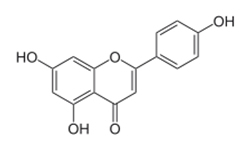
Apigenin: This is a type of flavonoid, with a yellow crystalline appearance. Apigenin exerts neuroprotective effects.
<Reference Link>: Neuroprotective effects of apigenin against inflammation, neuronal excitability and apoptosis in an induced pluripotent stem cell model of Alzheimer’s disease
(https://www.nature.com/articles/srep31450)
Luteolin: It reduces uric acid, improves fatty liver, prevents atherosclerosis, improves insulin resistance
Perillaldehyde: anti-inflammation, anti-parasite, vasodilative effect

Perilla has a long history, and it has been eaten in Japan since the Jomon period (14,000 – 300 BCE) and it has a history in Japan’s agricultural culture as one of Japan’s oldest crops. It is said that oil extraction of perilla began in the early Heian period(794 – 1185) . Since perilla seeds contain 35 to 40% of oily components, they have been used as coating oils in oil paper and paper lanterns as well as food. In addition to lights, Japanese paper was coated with perilla oil for waterproofing, and was used for rain gear such as umbrellas and raincoats.
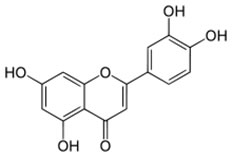
Perilla oil was widely used for about 800 years until the late Edo period (1603 – 1868) when rapeseed oil spreads nationwide. In the 1990s, perilla oil which is rich in α-linolenic acid became popular as health supplement.
Although perilla oil is sold even in supermarkets in Japan, the oil may be difficult to obtain in your country as .the origin of perilla is Asia. However, because perilla oil is becoming popular worldwide, you may find it in your country by searching the Internet.
* Novel Coronavirus (SARS-CoV-2)
The following paper was published in 2016. Melissa officinalis is so-called Lemon balm. I think everybody knows this plant. Oseltamivir is Tamiflu that is often used in the treatment of influenza. The researchers found that Lemon balm was as effective as Tamiflu against influenza virus (New H1N1). Melissa officinalis is rich in Rosmarinic acid. So, probably Rosmarinic acid is effective against novel coronavirus, too.
: Melissa officinalis efficacy against human influenza virus (New H1N1) in comparison with oseltamivir
(https://www.sciencedirect.com/science/article/abs/pii/S2222180816611155)
So, it may be good idea to take perilla oil that is rich in rosmarinic acid like Lemon balm to protect us both from novel coronavirus and dementia.
29) Phosphatidylserine
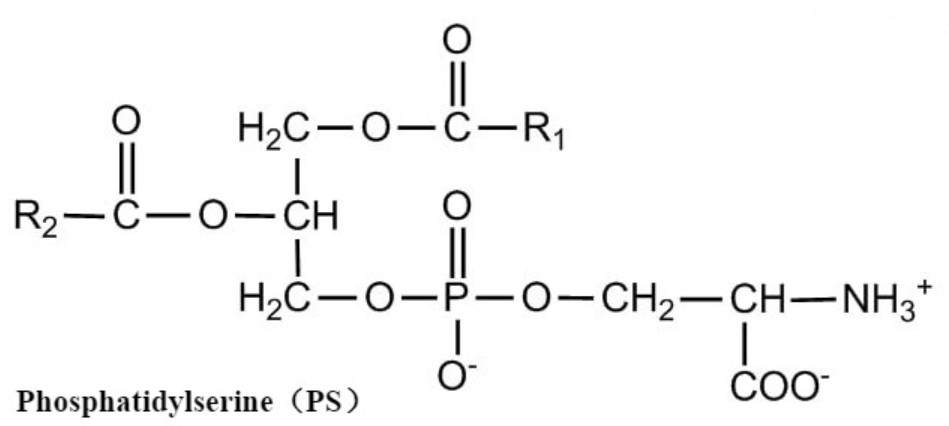
Phosphatidylserine is naturally produced in the body, and there are approximately 60 mg in adults, half of which is said to be in the brain nerve cell membrane. Myelin sheaths (phospholipid layers) that insulate around axons of nerves are also rich in phosphatidylserine.
It exists a lot inside the membrane and regulates the enzyme Na + / K + ATPase. This ensures that the balance between intracellular sodium and extracellular potassium is well maintained depending on the situation.
Phosphatidylserine helps the brain to have “long-term potentiation” of hippocampus, which plays an important role in memory. This has been confirmed by experiments. “Long-term potentiation” is a neurological term that means long-term enhancement of synaptic connections between neurons and plays an important role in maintaining memory.
: Evidence of a protective effect of phosphatidylserine-containing liposomes on lipopolysaccharide-induced impairment of long-term potentiation in the rat hippocampus
(https://www.sciencedirect.com/science/article/abs/pii/S0165572804000529)
It also has an inhibitory action on acetylcholinesterase, preventing the decrease in the neurotransmitter acetylcholine. It also improves the metabolism of dopamine and serotonin that are the same neurotransmitters, and activates brain function.
Phosphatidylserine has a function of inhibiting lipid oxidation and protects nerve cells. There are also reports of improving ADHD (Attention Deficit Hyperactivity Disorder).
As described above, it has various effects and is indispensable for short-term memory, long-term memory, recall, and the ability to learn new things. But phosphatidylserine in the body decreases with age. Therefore, supplementing with phosphatidylserine is efficient to improve brain function. It passes through the BBB (blood-brain barrier).
: Phosphatidylserine and the human brain
(https://www.sciencedirect.com/science/article/pii/S0899900714004523)
A method of synthesizing Phosphatidylserine from lecithin of soybean has been established, and it is now a readily available supplement. Taken together with DHA / EPA, unsaturated fatty acids of the omega-3 family, has a synergistic effect.
30) Plasmalogen
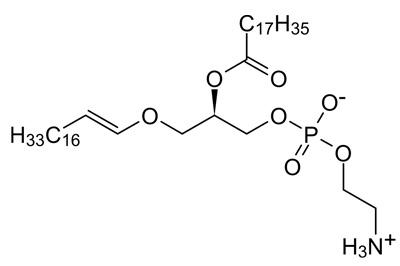

Plasmalogen is a type of phospholipid and is thought to play a role in the body as a reservoir for antioxidants and polyunsaturated fatty acids such as DHA. It is abundant in areas that consume a lot of oxygen, such as the heart and skeletal muscle, and is characterized by being particularly abundant in the brain.
Approximately 30% of glycerophospholipids in the adult brain and up to 70% of ethanolamine glycerophospholipids in the myelin sheath are plasmalogens. Plasmalogen protects internodal myelin from oxidative damage and reduces neuroinflammation that produces various cytokines and radicals.
Plasmalogen has a vinyl ether bond as a special structure different from other phospholipids. This special structure is known to be highly reactive with oxygen. In other words, plasmalogen is able to exert a high antioxidant effect and protect us from various diseases caused by oxidative stress.
Plasmalogen is known to decrease with age, especially in the brains of Alzheimer’s disease patients, which are often seen in the elderly. Blood plasmalogen levels in Alzheimer’s patients are even 30-40% low.

Sea squirts, scallops, and chicken breast are used as raw materials to produce plasmalogen. Since these raw materials are available almost everywhere in the world and not expensive, plasmalogen supplements are expected to become widespread in various countries in the near future.
Plasmalogens are found widespread in vertebrates and invertebrates, also in some Bifidobacterium strains that are considered to be good probiotics in the intestine. “Gut Brain Axis” is one of the most important factors to keep the brain healthy. We do not yet know how the plasmalogens present in the bacteria act on this axis. But probably the action is speculated to be very beneficial and much researches should be done.
Plasmalogen supplementation is recommended especially for female mild AD patients.
31) Propolis
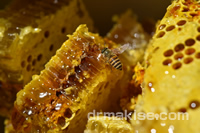
Propolis (bee glue) is a resinous substance produced by bees. It has been used as a folk medicine for the treatment of periodontal diseases. At least 180 different compounds have been identified so far. Its antibacterial, antiseptic, anti-inflammatory, antifungal, anesthetic, and healing properties have been confirmed. And quite safe substance, as it has been used for ages – by ancient Egyptians, Persians, and Romans.
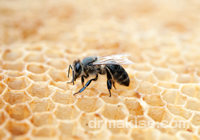
It is well known that chronic periodontitis is closely related to heart disease (100%), diabetes, osteoporosis, pneumonia, premature birth, etc. And periodontitis is being proven to be critically involved in the development of AD. There are several types of bacteria that cause periodontitis. Among them, Porphyromonas gingivalis is a keystone pathogen in the development of periodontitis.
P. gingivalis is a Gram-negative anaerobic bacterium that produces major virulence factors known as gingipains, which are cysteine proteases consisting of lysine-gingipain, arginine-gingipain A, and arginine-gingipain B. The researchers have found that these toxic proteases are essential for P.
gingivalis to survive and they cleave tau protein in humans, which leads to abnormal hyperphosphorylation of tau.
And Aβ1-42 is produced probably to protect nerve cells against the infection of P. gingivalis. In other words, Aβ (amyloid β) is not real cause of AD, but Aβ is the consequence of P. gingivalis infection. This theory is a Copernican innovative idea.
: Porphyromonas gingivalis in Alzheimer’s disease brains: Evidence for disease causation and treatment with small-molecule inhibitors
(https://advances.sciencemag.org/content/5/1/eaau3333?intcmp=trendmd-adv)
And Japanese researchers have proved propolis is effective against P. gingivalis due to its ability to affect bacterial membrane potential with increased membrane permeability, thanks to its highly lipophilic nature as compared with other compounds. Propolis is cheap and available at any vitamin shops worldwide.
: Rapid Bactericidal Action of Propolis against Porphyromonas gingivalis
(https://journals.sagepub.com/doi/abs/10.1177/0022034518758034)
Perhaps, Alzheimer’s disease may be prevented simply and easily by cleaning the gums with propolis!! So simple, so cheap, so safe treatment!! We lose nothing just because we clean our gums by propolis, even if we do not or wouldn’t suffer from AD. Rather, most of us can prevent at least heart disease or improve diabetes that is deeply connected with periodontitis.
(The author, Dr. Tadahiro Makise, of this article, declares that this article is written in the absence of any commercial or financial relationship with any companies or any persons that produce/sell any kinds of propolis or any inhibitors of gingipains.)
32) Saffron

Saffron is a perennial that belongs to the genus Saffron, and it has long been famous in West Asia, especially Iran. About 90% of the world’s total saffron production is produced in Iran.
It has been used as a spice and herbal medicine since ancient Egypt and China to improve memory impairment, insomnia, and prevent gynecological problems such as irregular menstruation, menstrual pain, and menopause.
The water-soluble carotenoid yellow component “Crocin”, contained in saffron pistils, acts on cerebral hippocampal neurons to improve memory. Crocin is derived from the scientific name of saffron, Crocus sativus.
In an experiment using a cerebral ischemic rat at a medical university in Mashhad, the second city of Iran that is the saffron production area, they proved the cognitive ability of the rats was improved by 250 mg/kg for saffron extract and by 25 mg/kg for Crocin,
<Reference Link>: Effects of saffron (Crocus sativus L.) and its active constituent, crocin, on recognition and spatial memory after chronic cerebral hypoperfusion in rats.
(http://www.ncbi.nlm.nih.gov/pubmed/21774008)
It also works to increase blood flow in the retina and choroid, so it’s a very good supplement for older people whose eyes are easily more blurred. And for even young people who are engaged in IT industry and look at the monitor screen for a long time.
Because saffron has been used as a coloring agent for food since ancient times, it is considered very safe.
33) Silk Protein

Did you know how many meters of silk yarn each small silkworm produces? 1.5 kilometers (≒0.93 miles) !! 70% of the yarn is composed of a long chain with a molecular weight of 350,000 to 370,000 Da called Fibroin, which is composed of 10 or more amino acids linked alternately. A sticky protein called Sericin covers Fibroin around the center of the silk thread.
Silk protein, which is hydrolyzed with a special enzyme, is called FPEH (Fibroin Protein Enzymatic Hydrolysate, also called Brain Factor-7). When taken 200~400mg/day of this, cognitive function improves in just 3 weeks. This has been confirmed in experiments with humans between the ages of 28 and 92 (average 55 years).
<Reference Link>: Effect of a Fibroin Enzymatic Hydrolysate on Memory Improvement: A Placebo-Controlled, Double-Blind Study
(https://www.ncbi.nlm.nih.gov/pmc/articles/PMC5852809/#B1-nutrients-10-00233)

The mechanism of FPEH cognitive improvement is as follows.
Improves blood circulation in the brain. Promotes uptake of glucose in nerve cells.
Part of the structure of FPEH binds to part of amyloid β (Aβ) and inhibits Aβ accumulation.
FPEH increases insulin sensitivity. As noted in Vitamin K, AD is so closely related to glucose metabolism that AD is even considered type 3 diabetes.
34) Vitamin B
Acetylcholine is a very important neurotransmitter in both the peripheral and central nerves. In AD, this important acetylcholine is reduced, which is one of the causes of dementia.
Acetylcholine is synthesized from acetyl-CoA that is a kind of vitamin B choline. Since acetylcholine is broken down by acetylcholine degrading enzyme, the decrease of acetylcholine can be stopped by inhibiting it, and donepezil hydrochloride (trade name: Aricept) was developed. It can be supplemented with choline, which is a biosynthetic material, by increasing the original amount of acetylcholine.
Vitamin B1 also helps acetylcholine synthesis.
Nicotinamide, a type of vitamin B3, helps to improve AD. This vitamin B does not block the accumulation of amyloid β (Aβ), but reduces the abnormal accumulation of tau protein.
<Reference Link>: Nicotinamide Restores Cognition in Alzheimer’s Disease Transgenic Mice via a Mechanism Involving Sirtuin Inhibition and Selective Reduction of Thr231-Phosphotau
(https://www.ncbi.nlm.nih.gov/pubmed/18987186)
Tau protein is necessary for stabilization of microtubules that work mainly when cells divide. If this protein is abnormally phosphorylated, it results in neurofibrillary degeneration, which in turn causes AD, (Tau hypothesis). Recently, researchers have focused more on Tau hypothesis than the accumulation of amyloid β, (Amyloid Hypothesis).
Usually, vitamin B group supplements contain a series of vitamin B, such as vitamins B1, B2, B3, B5, B6, B12, folic acid, biotin, choline, and inositol.
35) Vitamin B12

Most nerves are covered with sheath-like lipid called myelin. It acts as an insulator and speeds up the electrical impulses that travel through the nerve fibers. B12 is needed to make that myelin sheath. B12 is also required for the production of the neurotransmitter acetylcholine. In other words, B12 is a very important vitamin for the normal functioning of nerves.
<Reference Link>: Vitamin B12 offers neuronal cell protection by inhibiting Aβ-42 amyloid fibrillation
(https://www.sciencedirect.com/science/article/pii/S0141813017305457#!)
And if vitamin B12 is deficient, too much homocysteine is produced. Homocysteine is a “bad” or “toxic” amino acid biosynthesized from methionine. If the level of homocysteine in the blood is high, it causes various problems — dementia, coronary artery diseases, osteoporosis, NAFLD (Nonalcoholic Fatty Liver Disease), and so on.

<Reference Link>: Plasma Homocysteine as a Risk Factor for Dementia and Alzheimer’s Disease
(https://www.nejm.org/doi/full/10.1056/nejmoa011613)
Vitamin B12, vitamin B6, and folate are essential to reduce homocysteine. Usually two types of supplements of vitamin B12 are sold in vitamin shops, 1000μg or 5000μg tablet. 5000μg is necessary. Vegetarians often lack this vitamin.
36) Vitamin K
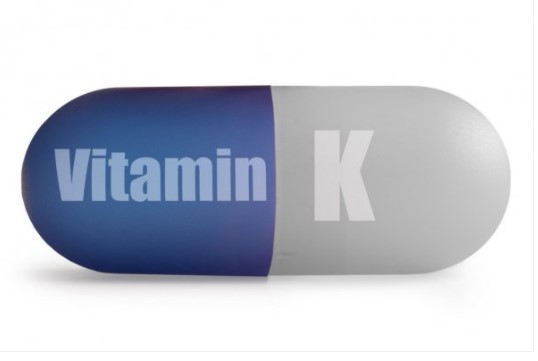
There are five types of vitamin K, K1 to K5. The most important one is K2, which is further classified into 11 types, but collectively called menaquinone (MK). Abbreviated as MK-4 to MK-14, of which MK-4 and MK-7 are important. It is converted from vitamin K1 to MK-4 in the arterial walls, pancreas, and testis. It is also converted from K1 to MK-4 by intestinal bacteria that inhabit the large intestine.
K2 actually exerts a lot of effects. It prevents the development of arteriosclerosis caused by calcium deposition and is effective in improving peripheral arterial disease. It also acts on the pancreatic beta cells to stimulate insulin secretion.
Recently, it has been found that AD is so closely related to glucose metabolism that AD can be considered as type 3 diabetes. Insulin is also secreted in the hippocampus of the brain, and the secretion is reduced in AD.
But vitamin K2 doesn’t bring about instant improvement of the brain function. Generally you don’t feel any alleviation soon. Please take it as the basic supplement to support healthy blood vessels that are the utmost important for brain function.
<Reference Link>: Increased dietary vitamin K intake is associated with less severe subjective memory complaint among older adults
(https://www.sciencedirect.com/science/article/abs/pii/S0378512216300196)
Caution: People taking warfarin should not take this vitamin.
Copyright: No reproduction or republication without written permission.
